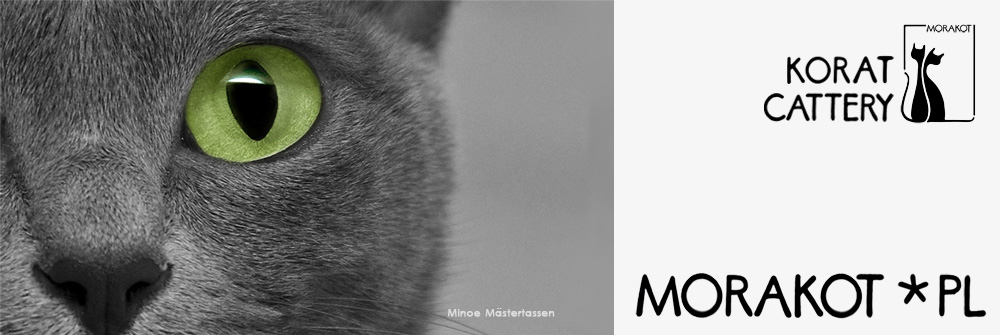These two breeds of blue cats differ significantly in disposition – the Russian Blue is a bit aloof, does not necessarily like to have his peaceful life disturbed and may be reserved towards visitors. The Korat is confident, sociable, balanced – and a real life spark.
At first sight the two breeds may easily be confused; there is a number of details, however, which distinguish them. In comparison to green eyes of the Russian Blue, which are almond-shaped, the Korat’s eyes are bigger, brighter and rounder. The ears of the Korat are rounder at the tips; the Russian Blue’s are more pointed. The Korat’s nose has a gentle stop and its tip is slanted, a feature not found in the Russian Blue, which has a nose and forehead that are completely flat. The Korat’s head is round with a strong shapely muzzle; the Russian Blue’s is wedge-shaped.



 Left: the Russian Blue, right: the korat
Left: the Russian Blue, right: the korat
The Russian Blue has a supple body with a delicate skeleton, a long trunk and neck, and slender legs – though it may appear stronger because of its thick coat. The Korat is compact and muscular, but it does not appear heavy. The Russian Blue is characterized by straight lines; the Korat by the gentle curves over the whole body.
A few features make Korats different from any other of the blue cats: Russian Blues, Chartreux, British or Oriental Shorthairs. Only the Korat has the heart shaped face. The fur is single coated, which makes it lie close to the body. The Korat is a rare and explicitly pure breed – unlike others, it owes its purity to natural selection in natural living conditions. Its unique beauty comes from many centuries of living close to nature – untouched by human interference.
More about the differences between the three cat breeds that come only in the color blue – the Chartreux, the Korat and the Russian Blue – can be found in the article at Show Cats Online. Various blue cats are also compared at What Blue Cat IS That?


